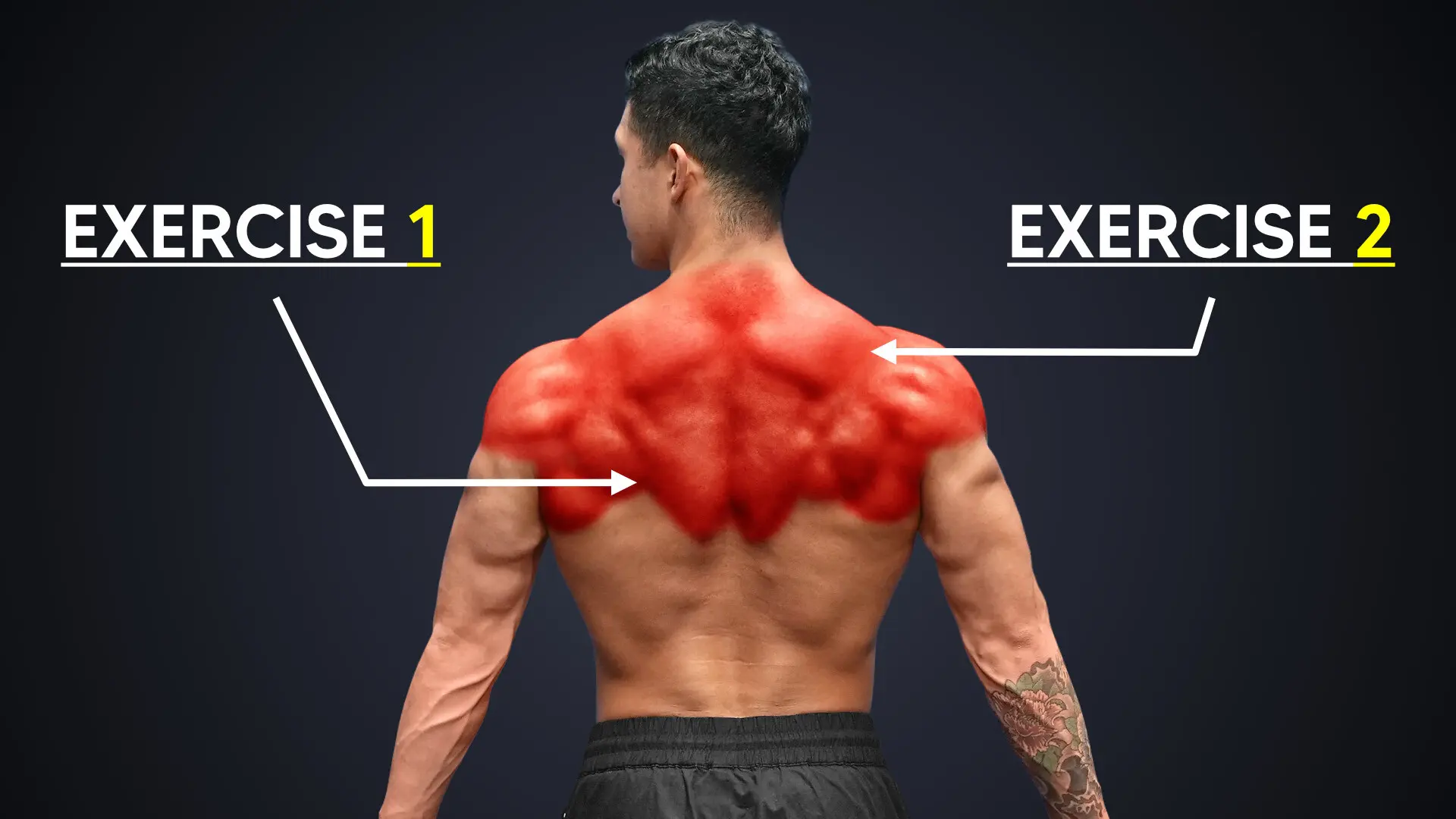
How To Unlock Your Push-Up Strength (In 5 Minutes)
Here's everything to know about how to do a push up correctly - so you can unlock maximum strength and muscle mass gains from the exercise.
I'm going to take your push ups to the next level in a few easy-to-follow steps. More specifically, in this article, I'll show you how to do a proper push up by showing you how you can:
- Optimally set up your body position
- Activate the right muscles to stabilize the above-mentioned position during your push up AND
- Combine the push up with a few modifications that'll unlock its maximum potential
After this article, your push up strength - and the resulting muscle growth you get from performing it - will be taken to a whole new level.
By the way: if you're looking for a training program that'll guide you, in a step-by-step manner, on how to level up every single one of your exercises (and workouts!), look no further. Built With Science programs are designed to maximize your strength and muscle gains in the most time-efficient way possible. To find out more:
Click the button below to take my analysis quiz to discover the best program for you:
↓
Step 1: Setup
First: setup. Getting this right is crucial to setting you up for success in the next steps. We'll start with hand placement. You're going to want to set up your hands such that at the bottom of your push up, two things happen:
- Forearms should end up on top of your wrists in a straight line - Avoid having your forearms bent at an angle. You may need to hold onto dumbbells if your wrists aren't very flexible.
- Elbows should tuck to roughly 45 to 60-degree angle - Your elbows should make an 'arrow' shape if you were to look down from an overhead view. Flaring your elbows into a 'T' shape weakens your push up, makes it more difficult to stabilize, and puts your shoulders at increased risk of injury.
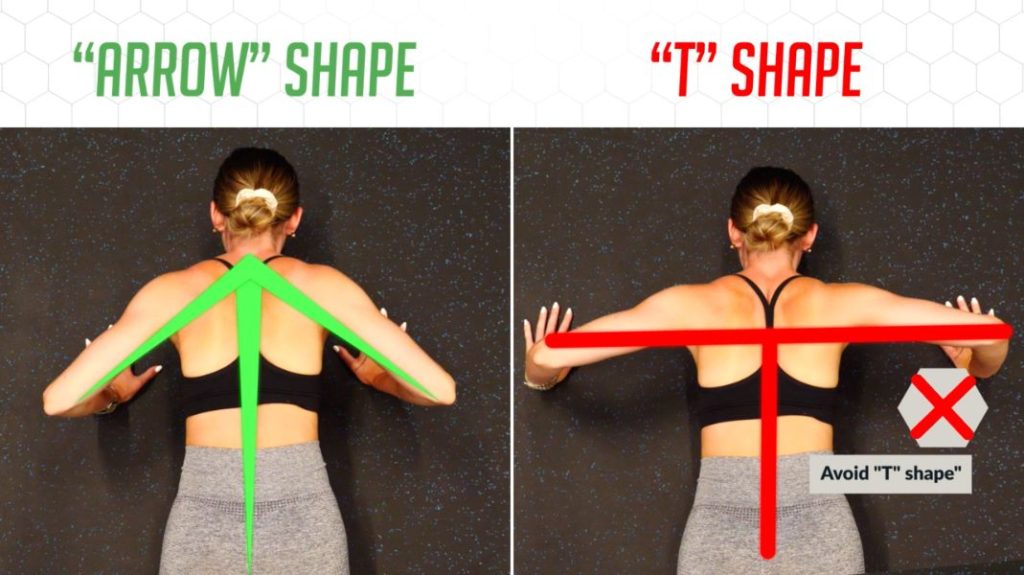
Accomplishing these 2 things during your setup will help 'unlock' several muscles that'll, in turn, maximize your strength as you push. And that's something we'll continue doing in steps 2 and 3.
Here's how you can find your 'sweet spot' hand position:
- Lie down on the floor with your hands at the level of your mid-chest
- Take a look at your forearm and elbows
- Move your hands wider or narrower until you find the hand width where the forearm is positioned directly over the wrists AND elbows are tucked into that 'arrow' position (as mentioned earlier)
Run through the steps, and most of you will end up with a hand placement at the mid-chest level - and placed just right outside the shoulders.

Successfully nailed that down? Good. Now, keep your hands on the floor. Then, get onto your hands and knees. Make sure your knees are right under your hips. You're ready for step 2: stabilize and activate.
Step 2: Stabilize And Activate
This step focuses on turning on several muscles that'll help better stabilize your body as you perform a push up. This will improve your push up strength dramatically by avoiding something called 'Energy Leaks'. This, in turn, maximizes your push up potential. Note that you MUST do this step before moving onto you first push up in step 3!
How To Stabilize The Upper Body For A Perfect Push Up
First, start by pushing your knuckle down to the floor. Spread your hands such that there's space between each of your fingers. This will help you incorporate more of your powerful chest muscles into the movement.
Next, slide your shoulders down and away from your ears. You should feel your lats turn on as you do this. That's a good thing; you want them to be involved. That's because the lats are a powerful stabilizer muscle that'll help contribute to your pushing strength.
Then maintain this activation in your lats as you push the floor away to open up your shoulder blades. This will help integrate another important muscle, the serratus anterior. As with the lats, this muscle will help further improve your stabilization and pushing strength.
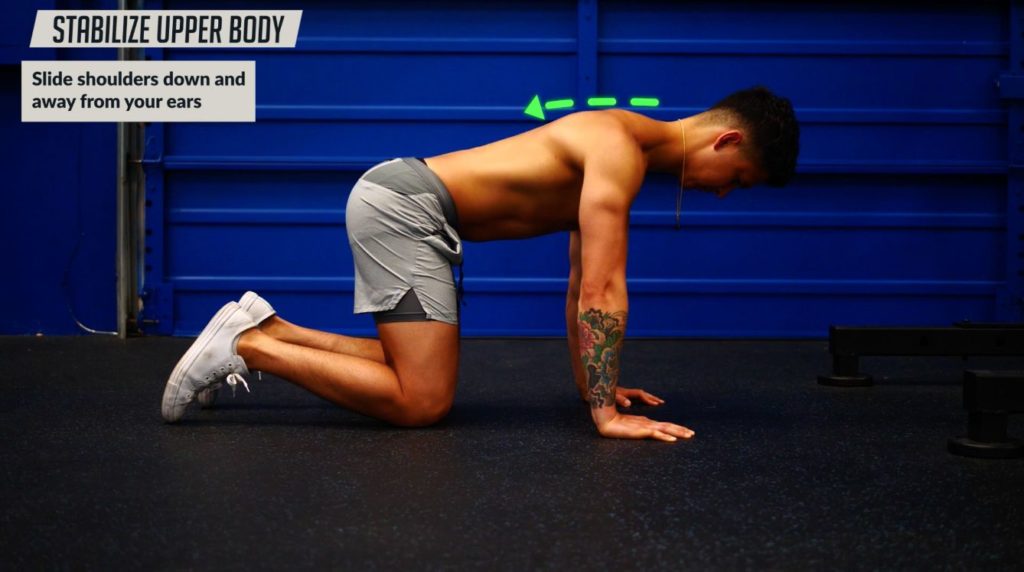
At this point, your head will likely be protruding forward. Adjust this by pulling your chin back to draw your head back in line with your body. This helps accomplish 2 things:
- Avoids stressing the neck AND
- Puts the mid-back muscles (i.e. mid- and lower traps) into a better position that'll help stabilize the body when performing the push up
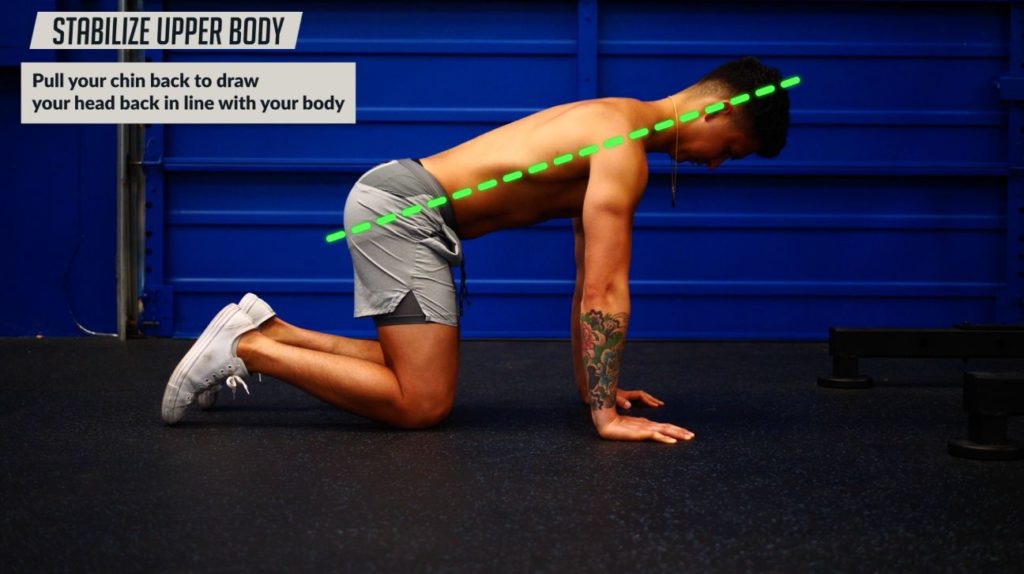
How To Stabilize The Lower Body For Proper Activation
At this point, we're done stabilizing the upper body. We're now ready to move on to the lower body. And after we stabilize the lower body, we'll be (finally) ready to do our first perfect push up!
We'll start by setting your hips in the right position. To do so, think about tucking your tailbone like so. Once you've made it here, you're ready to step back, then:
- Take a breath in and engage your core
- Extend one leg back
- Dig your toes into the floor and squeeze your thigh really tight to fully extend your leg
- Hold that position - then step the other leg back and squeeze the other thigh tight

Now, you're ready to do a push up! Don't worry if you find the standard push up to be too challenging/easy for you. I'm going to show you how you can modify the push up to suit your fitness level in the final step. But for now, let's look at the execution of a standard push up.
Step 3: Pull… And Then Push!
To perform your push up, we're actually going to start by pulling - and then pushing.
So, from the top position we established in step 2, do not just let gravity flop you to the floor. This will cause you to lose all the stability you worked so hard to create in the previous steps. Instead, think about using your back muscles to pull yourself to the floor. As if you were performing a row.
Note that your body will have to travel forward slightly. That's necessary for you to keep those elbows directly over the wrists (like we talked about in step 1).
Then, while squeezing your butt and thighs, push away from the floor to the top. This will open up your shoulder blades again, as we did during our setup. Your head, hips, and feet should make one straight line at this top position. Maintain this as you proceed to your next reps.
Step 4: Modifications
Now that we've nailed down your perfect push up, it's time to modify it based on your current strength level and body type.
Before diving into that, though, it's worth mentioning that this applies to every exercise you include in your training program. All movements can be progressed - or regressed - to suit your fitness level. Don't know how to do that? That's where our 3-on-1 coaching program comes in. Your dedicated coach will have the necessary knowledge and expertise to help you out. To find out more:
Click the button below to find out more about the 3-on-1 coaching program:
↓
If You Struggle With Maintaining Correct Form For The Standard Push Up
Struggle with push ups? But wait. "Just how many push ups should I be able to do to not be classified as struggling?"
Well, in general, if you can't do more than 10 good push ups with the form we previously covered, then you have some work to do. Here are a few good beginner-friendly options that'll help you build that strength up for quality reps on the standard push ups.
Leg-banded push-ups are my personal favorite. I find this exercise to be much more effective than the common modification of knee push-ups. To perform it:
- Loop a band around two fixtures (e.g. in between a squat rack)
- Make sure there's about a foot of space between the bottom band and the floor
- Note that the higher the band's height, the easier your push up will be - so adjust the height based on your strength level
- Get into your starting push up position such that the band is at waist-level, then proceed into your push up
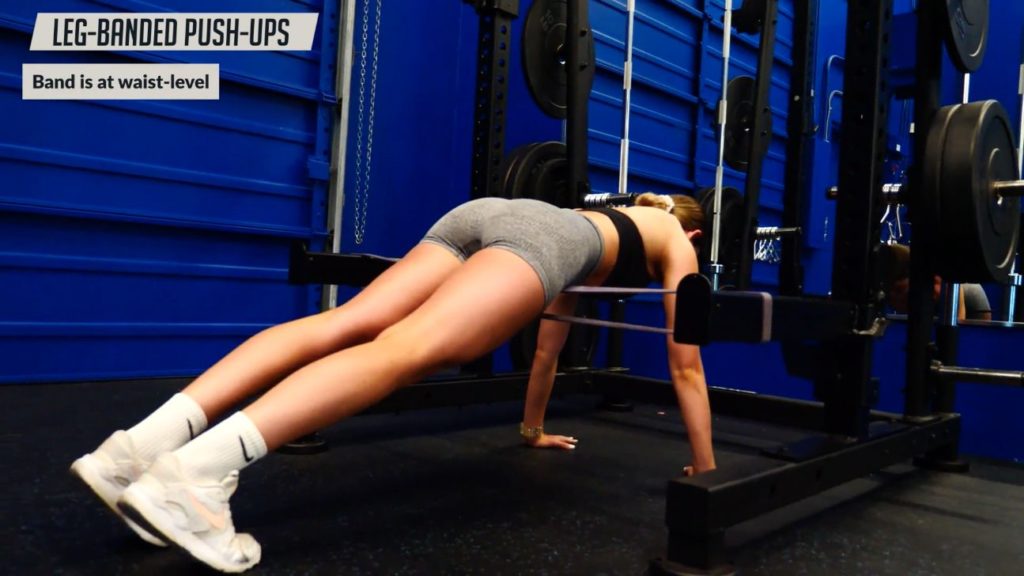
The band will help provide more and more assistance the lower you go, which is precisely the area of the push up where most people have the most difficulty with.
If you're unable to do this setup, an alternative is incline push ups. This will unload some of the weight of your upper body to make the movement easier.
You can do the incline push up by holding on to a bar on a squat rack or any elevated surface like a table, or even a weight bench. Over time, as your strength improves, gradually use less and less of an incline to increase the difficulty.
If The Standard Push Up Has Gotten Far Too Easy For You
'Mastered' the standard push up? Able to perform more than 20 good reps with them? Then it's time to increase the difficulty. This will be more effective for strength improvements and gains than aiming to do more and more reps. You have a few options to do so:
- Slow down the reps - Instead of taking 1 second to go down, extend it to 3 seconds. Do the same on the way up. Once that becomes too easy, incorporate a 1-2 second pause at the bottom as well. This will help apply more tension to the target muscles, and result in more growth for the same number of reps.
- Do banded push ups - This is my personal favorite. And is something we frequently incorporate into our Built With Science programs. That's because they've been shown to both activate and strengthen the upper body muscles as much as a weighted bench press does. To perform them, simply wrap a resistance around your back, hold the ends of the band with each hand, and then perform your push-up.
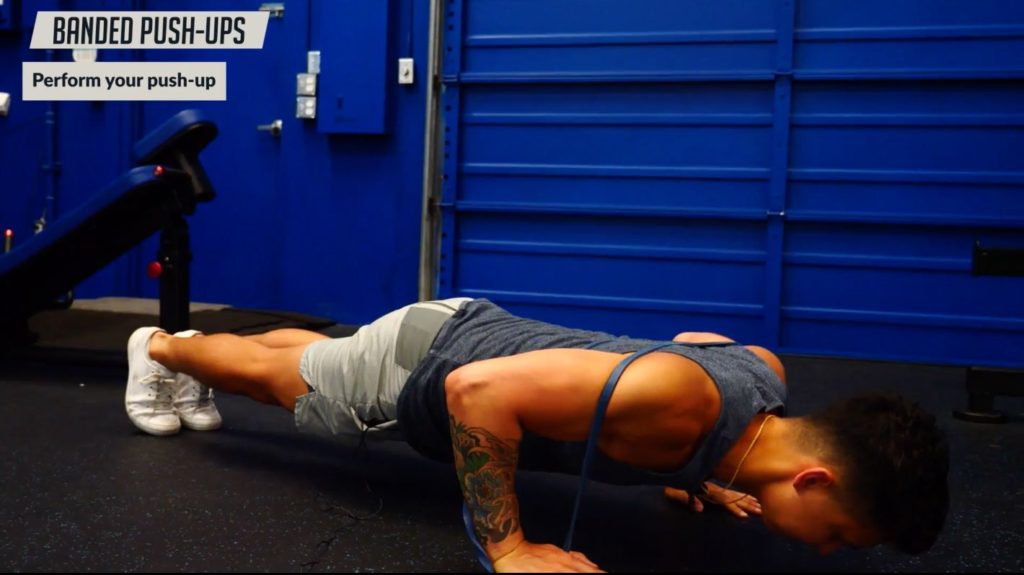
By picking the push-up that’s perfect for your level, you’ll be challenging your body with the right difficulty rather than doing something that’s too easy or too difficult for your body.
Unlocking Your Push Up Strength: Takeaway
If you want to maximize your growth and strength, then it’s important to apply this same level of detail and execution with all of your exercises - not just your push-up.
For a step-by-step program that shows you how to do just that, with in-depth tutorials for each and every exercise included in your program, then take our free quiz below, and we’ll determine which of our programs are best for you and your goals:
Click the button below to take my analysis quiz to discover the best program for you:
↓



